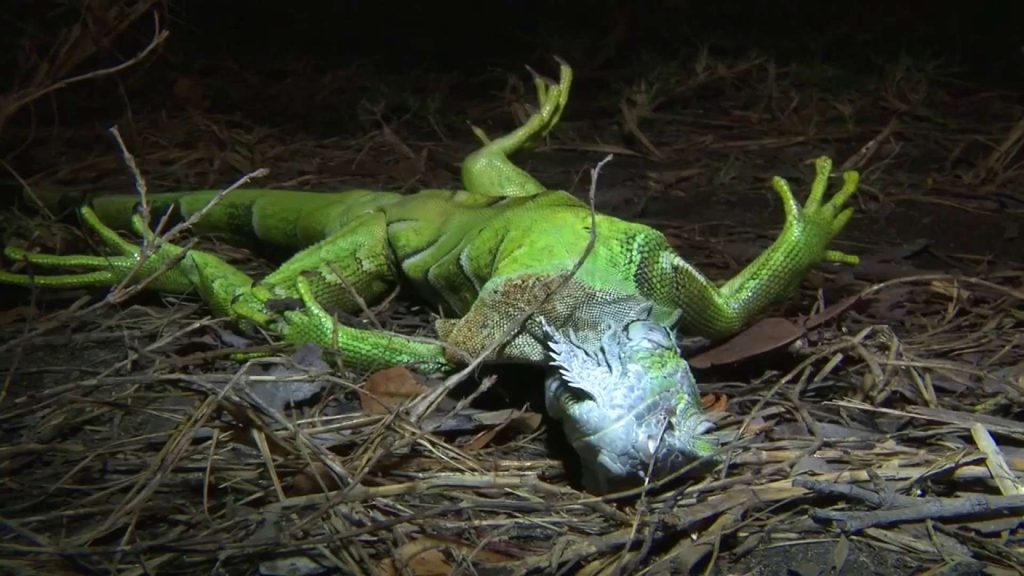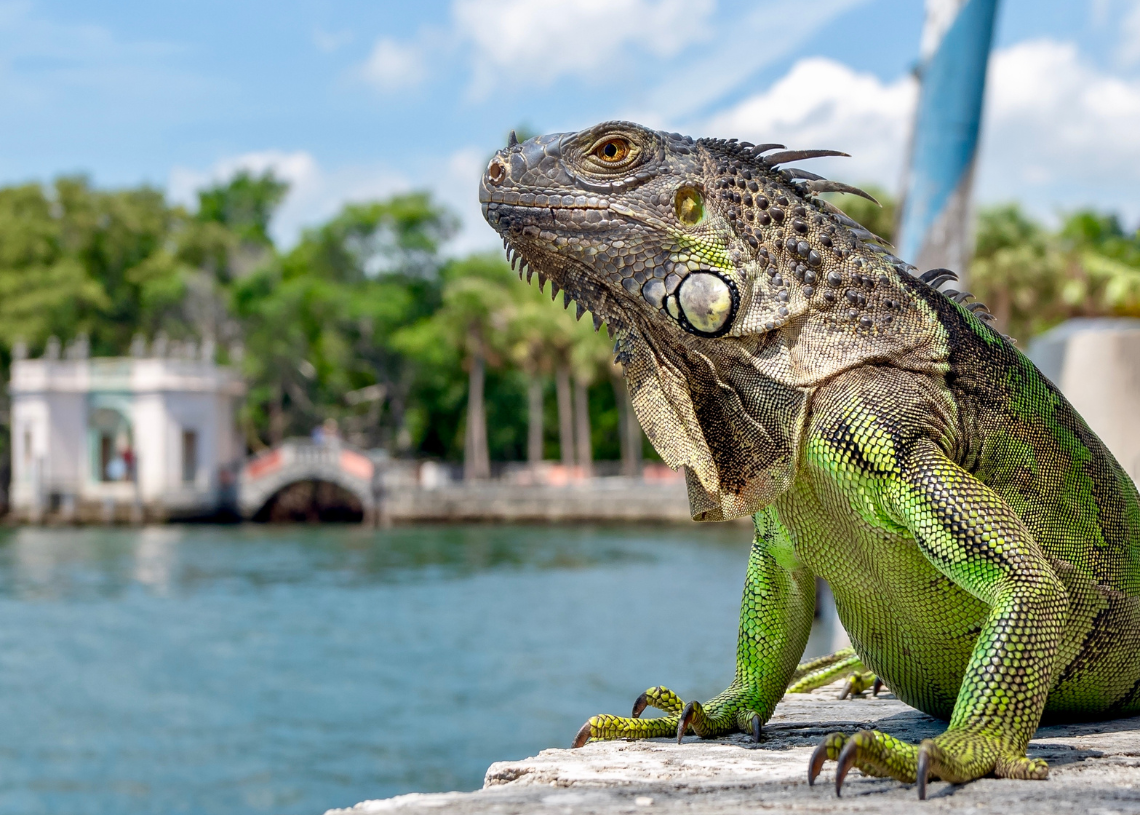Green iguanas are not endemic to Florida. The state has a reputation as an epicenter for non-native reptiles due to the actions of humans, intentional or not.
Historically, the introduction of reptiles to Florida was unintentional: they arrived as stowaways on ships. At the end of the 19th century, ecologists document the first introduction in the state: the brown anole (anolis sagrei), from Cuba. In other words, the island’s brown lizards, arrived in Ybor City together with the labor force and leaves from Vueltabajo for the factories that populated the local scene from 1886.
From then to date, they say, more than 150 species of non-native reptiles have been recorded. The vast majority were brought as pets on the road. underground.
One particular type of these reptiles, the green iguanas, were first documented in the Miami area in the early 1960s. According to the scholarsIn 1964, an “exotic pet” dealer deliberately released more than 300 of them in the Miami area. And since then, they say, intentional releases have contributed to its spread throughout the peninsula.
Today it is considered a invasive species that reproduces massively and uncontrollably by not having predators in its environment. And they cause a host of problems at airports, highways, power lines, and private residences of Floridians.
On the other hand, green iguanas have been among the most popular reptiles as pets. As small they are attractive and relatively easy to care for. But they get a lot harder to handle as they get older, so many of their owners set them free and do their bit to the invader problem.
As their name suggests, they are usually green, and the youngest specimens are bright green. In adults, the coloration ranges from intense to opaque green, but they can also be olive green or even brown. Following the call of Mother Nature, in reproductive conditions the males can be conspicuously orange.
Regardless of their color, they share common characteristics: long tails, short legs with long fingers, and sharp claws for better climbing. Both sexes have a flap of skin under the lower jaw called the “dewlap” and a large round scale on the back of the jaw. They also display a row of spines on the neck, back, and part of the tail. The spines are usually longer in males than in females.
In terms of size, males typically grow to over 6 feet in length, including their tails, while females reach a little over 5 feet. The tail represents, in almost all cases, up to three quarters of its total length.
During cold snaps in Florida, green iguanas often make it to the media. Temperatures of 30 to 40 degrees Fahrenheit (1-4 degrees Celsius) cause them to become lethargic and stiff. Their cold blood is the cause of what is known as the “rain of iguanas”.
Because they rely on external heat to regulate their body temperatures, when the mercury drops below those values they enter a state of hibernation and plummet from the trees.
These days, while a historic cold front hits much of the United States, including Florida (especially its northern and central parts), green iguanas have once again grabbed the headlines.
“With cooler temperatures this holiday weekend, green iguanas may be seen in a state of torpor, in which they temporarily lose all muscle control,” the Fish and Wildlife Commission announced Dec. 23.
It is normally advised do not approach or manipulate them because they are usually dangerous if they “wake up”. “Be careful, let nature do its thing,” warns a report. “You have to be careful: don’t go near a frozen iguana and certainly don’t take it inside your home to ‘revive’ it,” says another. “They can bounce back faster than you think and get defensive. Once they ‘thaw’ they can become aggressive and scratch or bite using their long tails and sharp teeth and claws,” recalled the aforementioned Fish and Wildlife agency.
As the reader knows, hunting and eating iguanas is a traditional culinary practice in many countries of South and Central America. According to National Geographicin some the species has been declared in danger of extinction due to excessive human consumption.
For some time now, a category has been emerging in Florida to designate iguanas: “chickens of the trees”, which means that certain places, and they don’t seem to be few, have no existential problem if it comes to eating the green creatures that fall from the sky like in a Dalí painting. It is a meat, nutritionists say, with high levels of protein. And that, in fact, they reiterate, contains more protein than the same chicken.

It is legal to kill iguanas in Florida, but it is required to be done “in a humane manner.” Specialists recommend shooting them with pellet guns, stabbing them in the head, or decapitating them with a sharp object so they don’t suffer.
“I like to eat what I grow, I know that many people kill iguanas because they are a nuisance; I wanted to cook them and eat them in hopes of encouraging those who kill them to eat them too,” a parishioner told ABC News. And she continued: “I tried not to overseason it because I wanted to taste the iguana. It’s a little softer than I normally eat; I would add more spices to it in the future.”

















